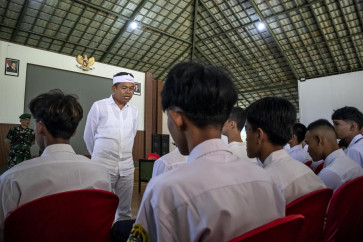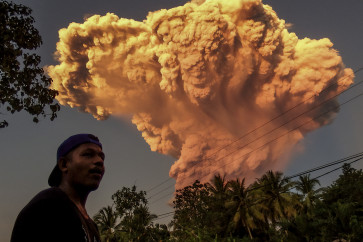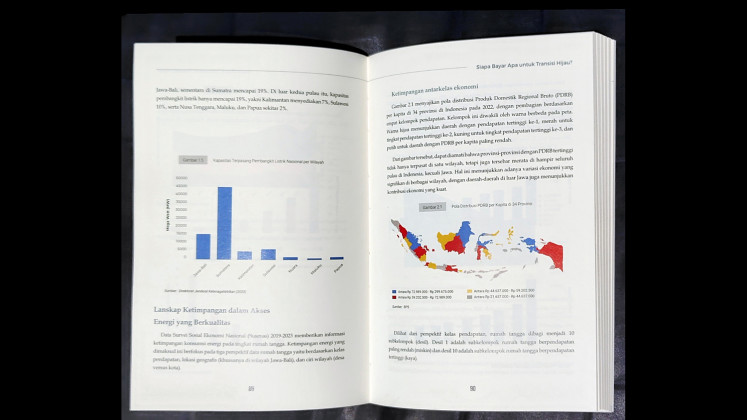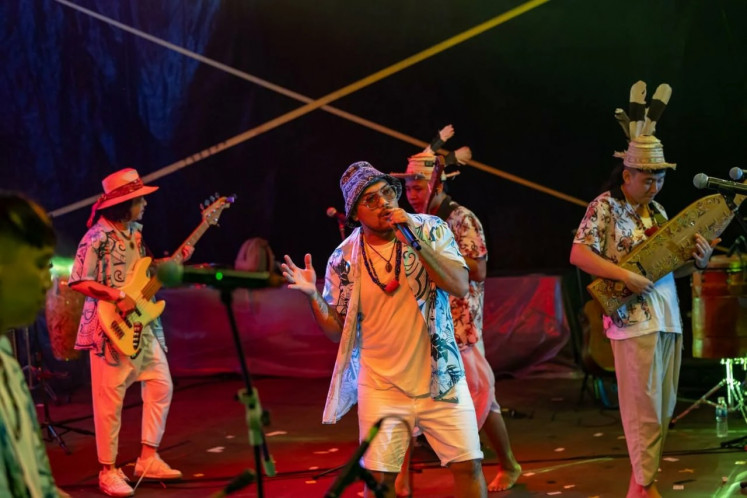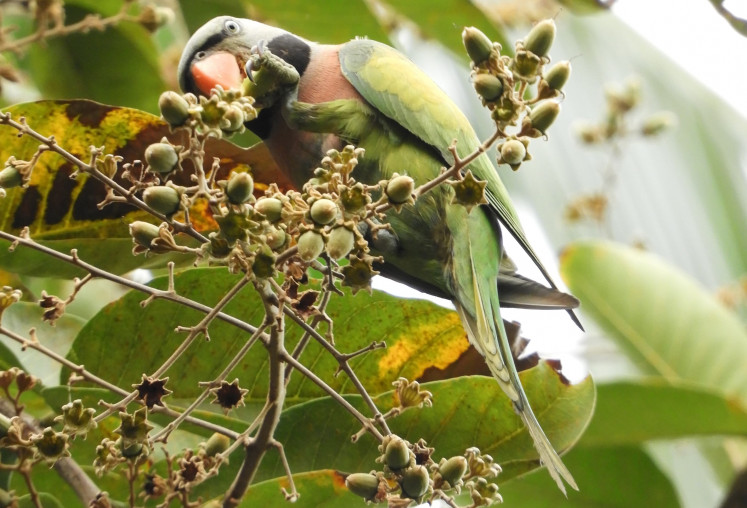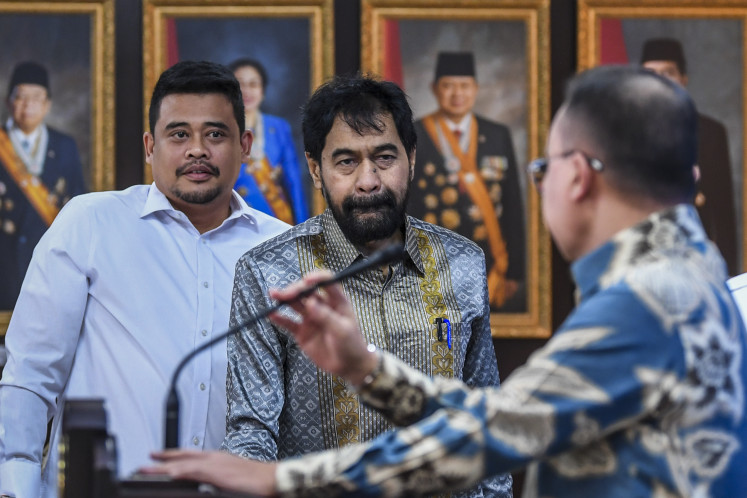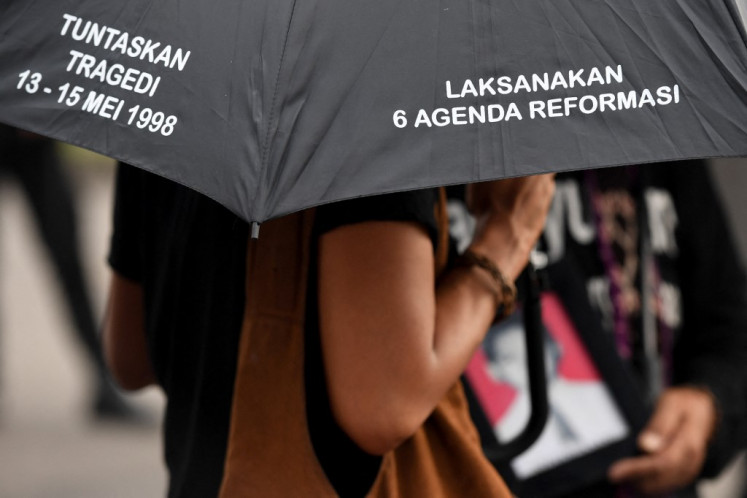Popular Reads
Top Results
Can't find what you're looking for?
View all search resultsPopular Reads
Top Results
Can't find what you're looking for?
View all search resultsCeng Beng: Time for contemplation for people of Chinese descent in Semarang
The peak of Ceng Beng fell on April 5. But the pilgrimage to the ancestors' tombs can be conducted ten days prior or after the day.
Change text size
Gift Premium Articles
to Anyone
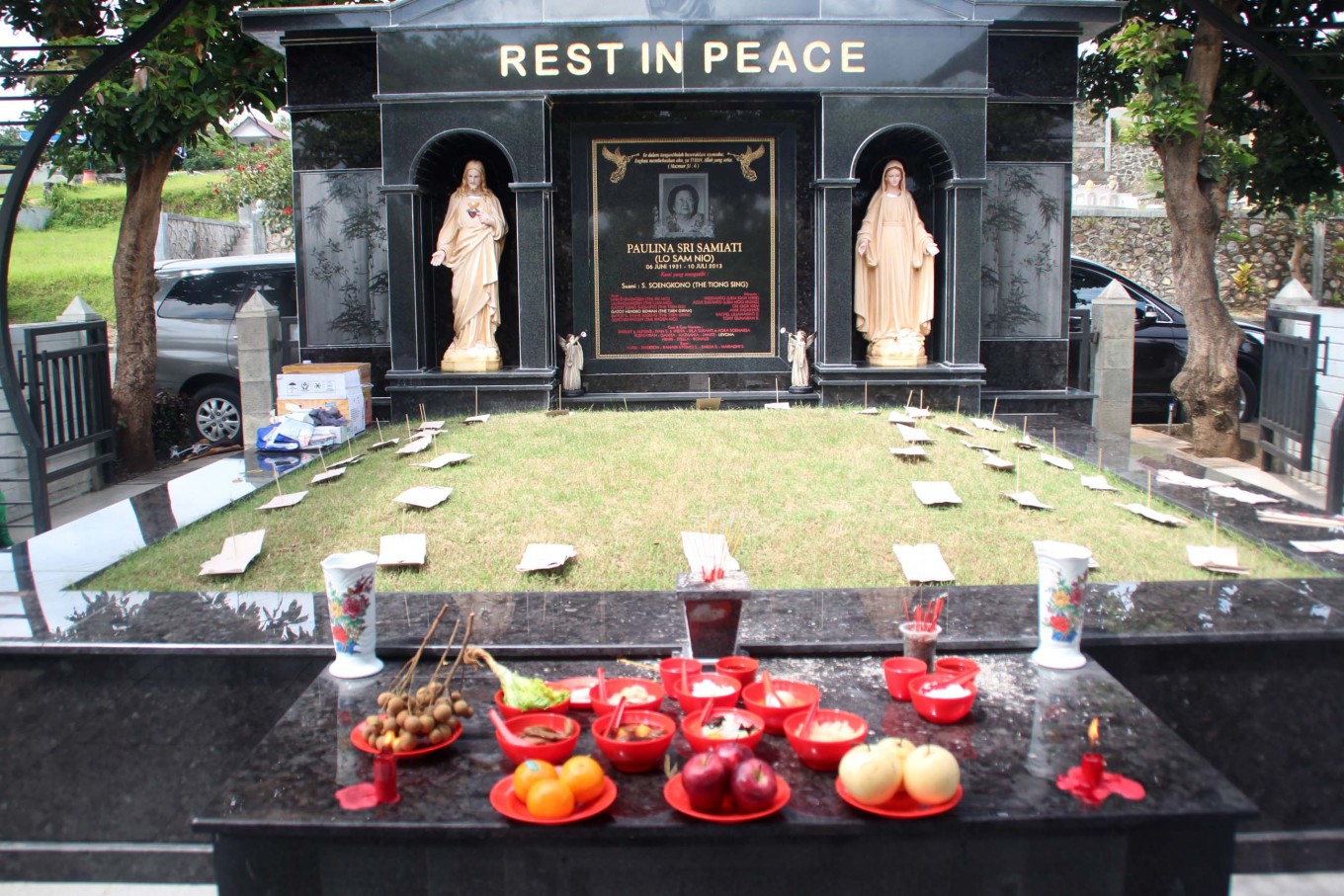 Various food, flowers, incense and candles can be found on the tomb's altar. (JP/Suherdjoko)
Various food, flowers, incense and candles can be found on the tomb's altar. (JP/Suherdjoko)
M
any people of Chinese descent and their family from Semarang and the surrounding areas slowly arrived at Mount Carmel, a hill in Ungaran, Semarang regency, Central Java on Sunday.
They were visiting the burial ground there, cleaning it and held sembahyang (prayer) or pai as part of the Ceng Beng or Qing Ming ritual, a 20-day tradition of respecting the ancestors.
The peak of Ceng Beng fell on April 5. But the pilgrimage to the ancestors' tombs can be conducted ten days prior or after the day.
"We came here with the whole family. This is the resting place of my mother in law, Ibu Paulina Sri Samiati or Lo Sam Nio," said 68-year-old Liem Kian Hwie or Widiyanto.
"We always come during Ceng Beng, since 2014. We gather and pray together in front of my mother's grave," said The Bie Nio or Mientariningsih, the oldest daughter of Lo Sam Nio.
Lo Sam Nio was a Catholic hence her tomb features a statue of Jesus and Mary. It also has writings of her and her family's full names, including her husband (who had passed away and was cremated), children, grandchildren and great-grandchildren.
There is also a sentence from Mazmur 31:16, "Into your hand I surrender my life. You set me free, dear God, the loyal Allah."
The tomb also has a painting of Jesus, including the Last Supper. Meanwhile, various food, flowers, incense and candles can be found on the altar.
Despite being Catholic, this family maintains Ceng Beng traditions, such as performing rituals at their ancestors' tombs.
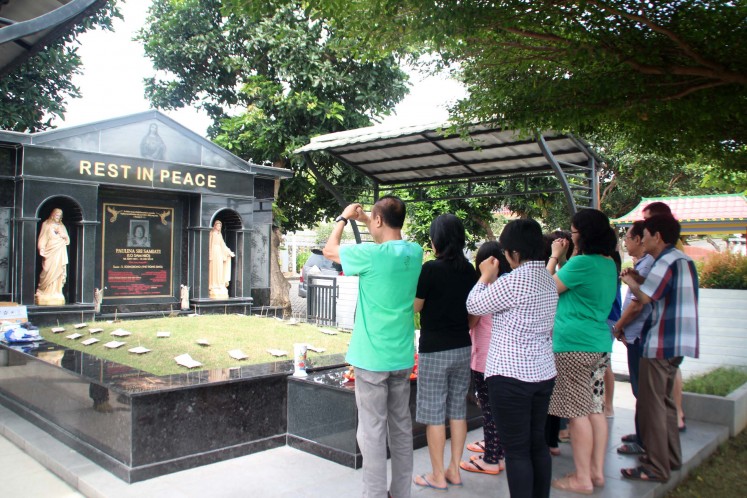
"Perhaps we don't perform all the Ceng Beng rituals; I don't understand it all myself. But we try to preserve this good tradition. Perhaps other families who have other religions will conduct Ceng Beng in their own way as well," said Liem Kian Hwie, the husband of The BIe Nio.
Ganita Ridwan, the grandchild of Lo Sam Nio, said she was happy and understood the importance of the ritual. "It also serves as an event for our big family," said Ganita, who studies at Semarang Soegijapranata Catholic University.
There are around 600 tombs in Mount Carmel. Those who were buried there were either Christian, Buddhist or Confucian. The price for a grave in the cemetery can reach from tens to hundreds of million of rupiah. Each graveyard is well-maintained thanks to the cleaning staff.
Read also: Celebrating Ceng Beng festival
Each Ceng Beng ritual usually turns into a festival. One of the committee members, Kris, said this year was the 11th time such event was held.
Meanwhile, many people of Chinese descent in Semarang also observed the Ceng Beng ritual in Bong Bunder or Bundeng Cemetery at Jl. Taman Mugas Timur. There are two graveyards there that are believed to be the place where Chinese people lived when they first arrived in Semarang.
These two cemeteries were previously located in Petolongan. Hence the tombs in Petolongan were said to be the oldest Chinese graveyards in the city. Those who are buried there were people of Chinese descent who lived in Gedong Batu in Simongan, where Chinese admiral Cheng Ho once landed.
Bong Bunder itself is maintained by the Tjie Lam Tjay Foundation. The foundation's head, Aman Gautama, said those who were buried at the two graveyards were perhaps the ancestors of Semarang's first Chinese residents under the colonial period. The cemetery was then moved from Petolongan to Mugas in 1797.
"Ceng Beng serves as a time for contemplation on better respecting and caring for parents and ancestors," he said. (kes)

